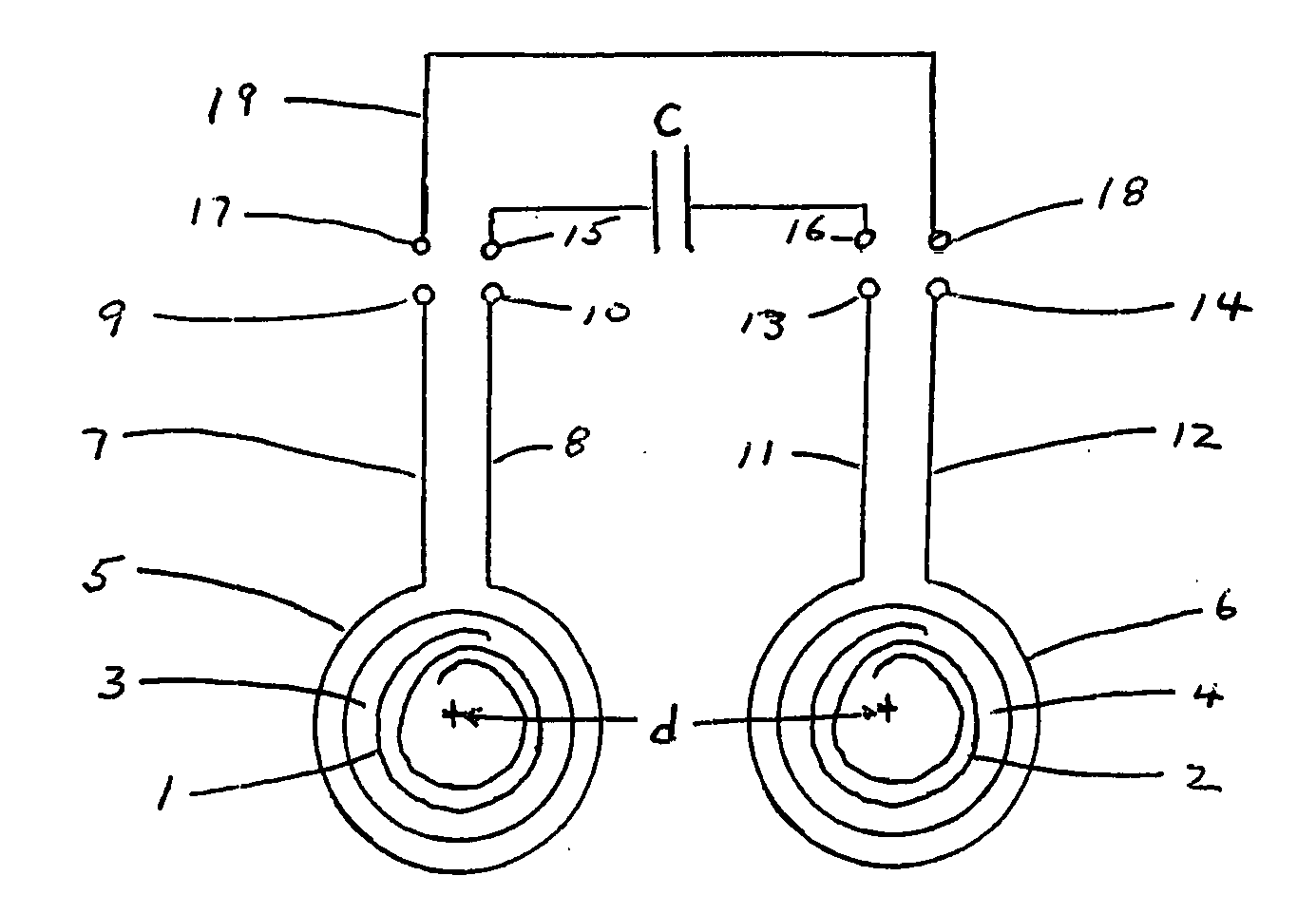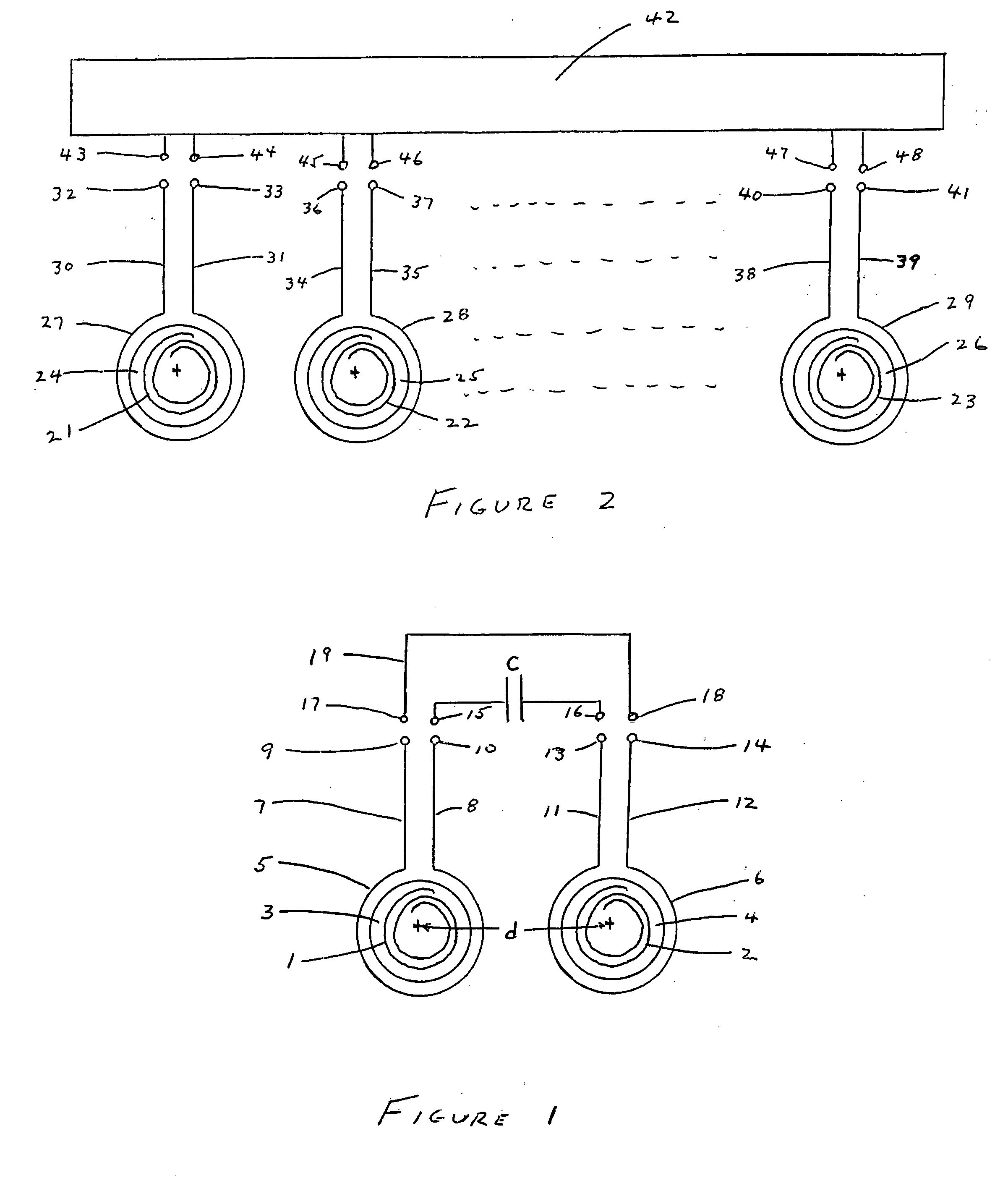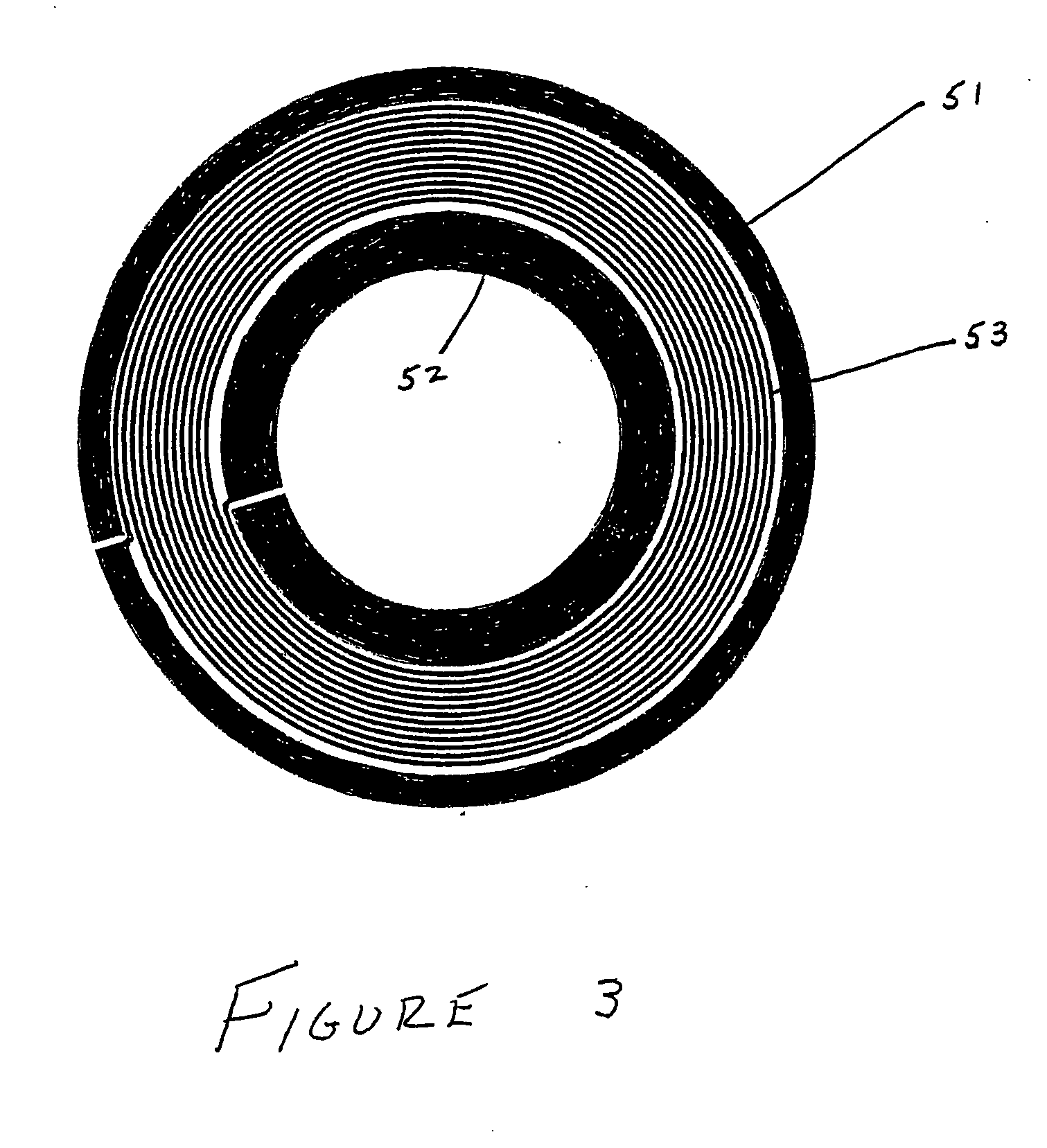Decoupling high temperature superconductor sensor arrays in nuclear quadrupole resonance detection systems
a superconductor sensor and array technology, applied in the field of decoupling high temperature superconductor sensor arrays in nuclear quadrupole resonance detection systems, can solve the problems of affecting system performance, reducing detection accuracy, and the associated equipment needed to operate the system
- Summary
- Abstract
- Description
- Claims
- Application Information
AI Technical Summary
Benefits of technology
Problems solved by technology
Method used
Image
Examples
example 1
[0033] Example 1 demonstrates the decoupling of an array of two sensors by means of a capacitive decoupling circuit comprised of two decoupling loops, each of which is inductively coupled to one of the sensors, and a capacitor connected to the decoupling loops.
[0034] Each HTS sensor is comprised of two coupled essentially identical Tl2Ba2CaCu2O8 planar coils. Each of the coupled coils is on a lanthanum aluminate (LaAlO3) substrate with the coil design configuration shown in FIG. 3 on both sides of the substrate.
[0035] A clean, polished single crystal LaAlO3 substrate with a diameter of 2 inches (5.1 cm) and an approximate thickness of 0.02 inches (0.5 mm) may be obtained from Litton Airtron, Morris Plains, N.J. Off-axis magnetron sputtering of a Ba:Ca:Cu oxide target is used to deposit, at ambient temperature, an amorphous precursor Ba:Ca:Cu oxide film on both sides of the substrate. This amorphous Ba:Ca:Cu oxide film is about 550 nm thick and had a stoichiometry of about 2:1:2. T...
PUM
 Login to View More
Login to View More Abstract
Description
Claims
Application Information
 Login to View More
Login to View More - R&D
- Intellectual Property
- Life Sciences
- Materials
- Tech Scout
- Unparalleled Data Quality
- Higher Quality Content
- 60% Fewer Hallucinations
Browse by: Latest US Patents, China's latest patents, Technical Efficacy Thesaurus, Application Domain, Technology Topic, Popular Technical Reports.
© 2025 PatSnap. All rights reserved.Legal|Privacy policy|Modern Slavery Act Transparency Statement|Sitemap|About US| Contact US: help@patsnap.com



